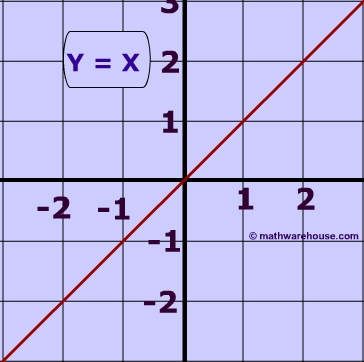The absolute value function is used to indicate length and one important property that is used here is that length is always positive.
Let's consider a few examples:
|23| = 23
|-7| = 7
The definition of an absolute value is:
|a| = a if a > 0
or
|a| = -a if a < 0
where a can be any number and trivially
|0| = 0.
The equation of a trivial straight line is y = x. This is a line going through the origin and where the gradient is 1. If we now want to draw the function y = |x|, how will it be different from this straight line?
Well there is only one difference and that is that all the function values must be positive. Let me explain this by means of graphs.
This is the graph of the straight line
and this is the graph of the absolute value y = |x|.
(image from: http://hotmath.com)
Do you see what has happened?
The negative part of the line just became positive, so i.e. if y = -2 for the line, then y = 2 for the absolute value function.
| Stay positive! |


No comments:
Post a Comment